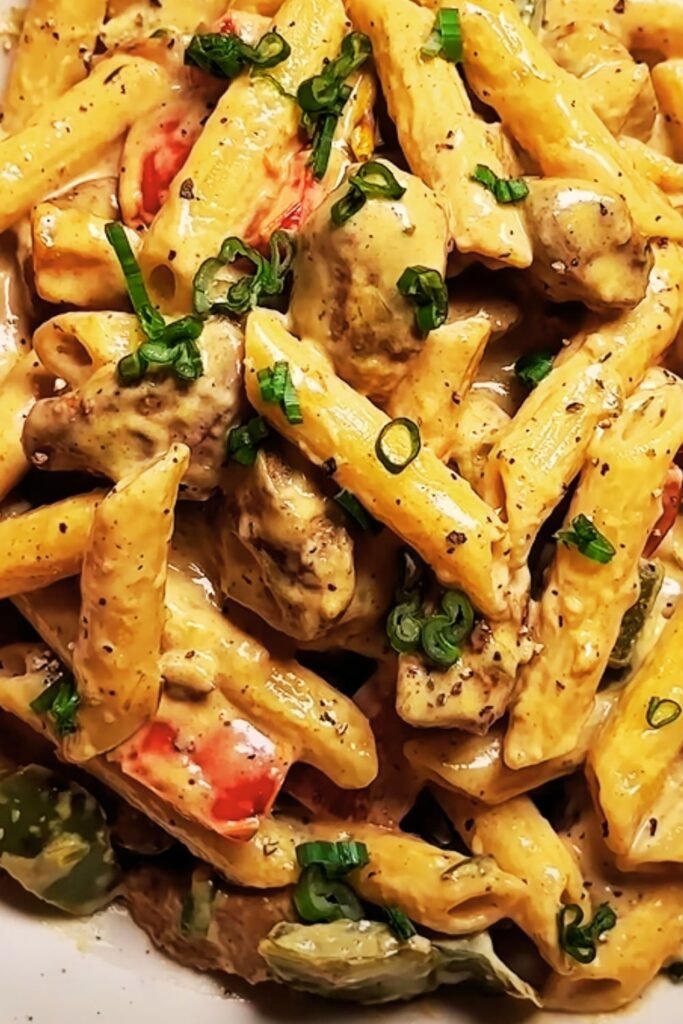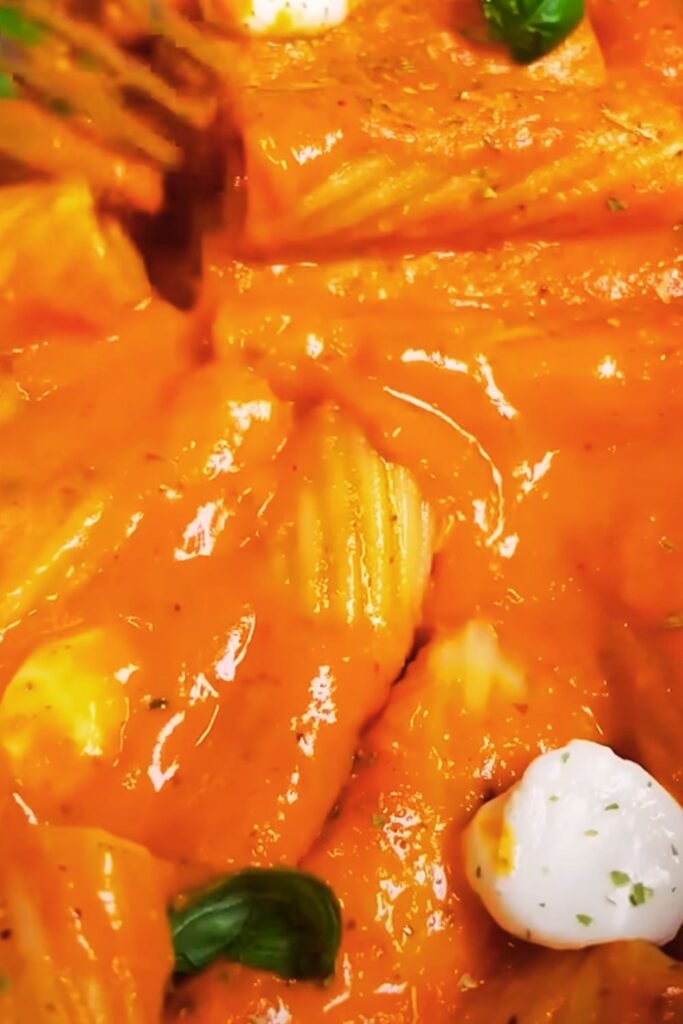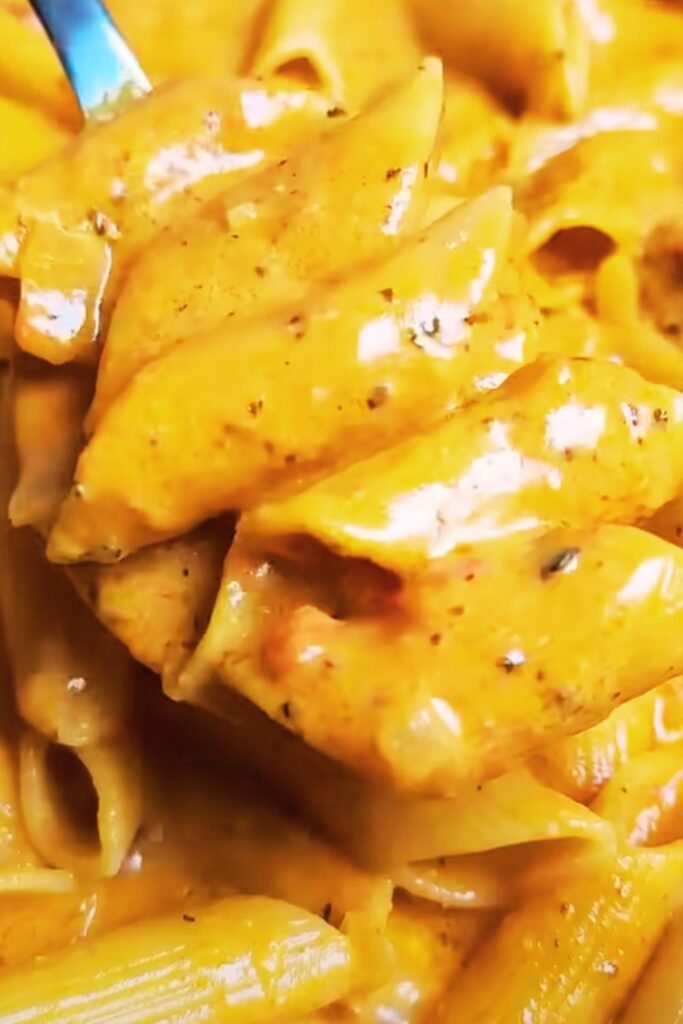When I became a parent, I quickly learned that feeding my little one could be both exciting and challenging. Store-bought baby food often contains preservatives, excess salt, and sugar that aren’t ideal for developing palates and bodies. That’s why I started making homemade baby pasta sauce – a versatile, nutritious option that grows with your child from first foods through toddlerhood.
In this comprehensive guide, I’ll share my tried-and-tested baby pasta sauce recipes, storage tips, and serving suggestions. These recipes have been kitchen-tested countless times, ensuring they’re not only nutritious but genuinely appealing to little taste buds!
Why Make Homemade Baby Pasta Sauce?
When I first researched commercial baby foods, I was shocked by the ingredients list. Even products marketed as “natural” often contained unnecessary additives. Here’s why making your own baby pasta sauce is worth the effort:
- Complete control over ingredients: You decide exactly what goes into your baby’s food
- Higher nutritional value: Fresh ingredients retain more vitamins and minerals
- Cost-effective: Making batches at home saves money compared to pre-packaged options
- Introduces varied flavors: Helps develop your baby’s palate with different taste experiences
- Reduces food waste: Uses regular family ingredients in new ways
- Adaptable to developmental stages: Easily adjust texture from smooth purees to chunkier sauces
I still remember my daughter’s face lighting up when she first tried my homemade carrot and sweet potato sauce! That moment convinced me that a little extra kitchen time was absolutely worth it.
When Can Babies Start Eating Pasta Sauce?
Before diving into recipes, let’s clarify when babies can safely enjoy pasta sauce:
| Age | Texture | Considerations |
|---|---|---|
| 6-8 months | Smooth puree | Introduce single vegetables first; avoid salt, sugar, and dairy |
| 8-10 months | Slightly textured | Can combine 2-3 ingredients; minimal herbs may be introduced |
| 10-12 months | Small soft chunks | More complex flavor combinations; still minimal salt |
| 12+ months | Regular texture with soft chunks | Can include most family foods with modifications |
Always consult your pediatrician before introducing new foods, especially if your family has a history of allergies. I personally followed the “four-day rule” when introducing new ingredients – offering just one new food at a time and waiting 3-4 days before introducing another to watch for any adverse reactions.
Essential Equipment for Making Baby Pasta Sauce
Making baby pasta sauce doesn’t require fancy equipment, but these tools have made my homemade baby food journey much easier:
- Blender or food processor: For creating smooth purees
- Ice cube trays: Perfect for freezing single portions
- Steam basket: Preserves nutrients better than boiling
- Storage containers: Glass containers are ideal for refrigerator storage
- Mesh food strainer: Helpful for removing seeds and skins for younger babies
- Silicone baby food freezer trays: Makes portioning and defrosting easier
I started with just a regular blender and ice cube trays, adding more specialized equipment as I continued making baby food. Don’t feel pressured to buy everything at once!
Basic Baby Pasta Sauce Recipe (6-8 months)
This simple, nutrient-rich sauce is perfect for babies just starting their food journey. I remember making this weekly during those early months!
Ingredients:
- 2 medium carrots, peeled and chopped
- 1 small sweet potato, peeled and chopped
- 1 small zucchini, chopped (no need to peel if organic)
- ¼ cup water or low-sodium vegetable stock
Instructions:
- Steam carrots and sweet potato for about 15 minutes or until very tender
- Add zucchini during the last 5 minutes of steaming
- Transfer all vegetables to a blender
- Add water or stock and blend until completely smooth
- Cool before serving to baby
Storage:
- Refrigerate for up to 3 days
- Freeze in ice cube trays for up to 3 months
This basic sauce can be mixed with baby cereal, served with pastina (tiny pasta), or even used as a dip for soft finger foods as your baby develops.

Intermediate Baby Pasta Sauce (8-10 months)
As your baby grows, they’ll appreciate more complex flavors. This sauce introduces mild herbs while maintaining an appropriate texture.
Ingredients:
- 1 tablespoon olive oil
- 1 small onion, finely diced
- 1 garlic clove, minced
- 2 ripe tomatoes, seeds removed and chopped
- 1 red bell pepper, seeds removed and chopped
- 1 medium carrot, peeled and diced
- ½ teaspoon dried oregano (or fresh basil leaves, finely chopped)
- ¼ cup water or low-sodium vegetable stock
Instructions:
- Heat olive oil in a small saucepan over medium-low heat
- Add onion and sauté until translucent (about 5 minutes)
- Add garlic and cook for 30 seconds until fragrant
- Add tomatoes, bell pepper, and carrot
- Pour in water or stock and add herbs
- Simmer covered for 15-20 minutes until vegetables are very soft
- Let cool slightly then transfer to blender
- Pulse until smooth with some very small texture remaining
- Cool completely before serving
Nutritional Benefits:
- Tomatoes: Vitamin C and lycopene
- Bell peppers: Vitamins A and C
- Carrots: Beta-carotene and fiber
- Olive oil: Healthy fats for brain development
I’ve found this sauce works beautifully mixed with small pasta shapes like orzo or tiny shells. My daughter particularly loved it with little star-shaped pastina!
Advanced Baby Pasta Sauce (10-12 months)
By this age, babies typically enjoy more texture and complex flavors. This sauce incorporates protein through lentils and introduces mild spices.
Ingredients:
- 1 tablespoon olive oil
- 1 small onion, finely diced
- 1 garlic clove, minced
- 1 small carrot, peeled and diced
- 1 celery stalk, finely diced
- 1 small zucchini, diced
- ½ cup red lentils, rinsed
- 1 can (14 oz) crushed tomatoes (no salt added)
- 1 cup water or low-sodium vegetable stock
- ¼ teaspoon dried oregano
- ¼ teaspoon dried basil
- Pinch of ground cinnamon (optional but adds wonderful depth)
Instructions:
- Heat olive oil in a medium saucepan over medium heat
- Add onion, carrot, and celery, sauté until softened (about 7 minutes)
- Add garlic and cook for another minute
- Add zucchini, lentils, crushed tomatoes, and water/stock
- Stir in herbs and cinnamon if using
- Bring to a simmer, then reduce heat to low
- Cover and cook for 25-30 minutes, stirring occasionally, until lentils are soft
- For younger babies, blend to desired texture
- For older babies, mash lightly with a fork for more texture
Serving Suggestions:
- Mix with whole wheat pasta shapes
- Serve over soft polenta
- Use as a sauce for homemade vegetable patties
- Offer as a dip with soft bread fingers
When my daughter reached this stage, I often made double batches of this sauce – half for her and half for our family pasta dinners (just adding salt and pepper to the adult portion).
Protein-Packed Pasta Sauce (12+ months)
By their first birthday, most babies can enjoy modified versions of family meals. This protein-rich sauce is perfect for growing toddlers.
Ingredients:
- 2 tablespoons olive oil
- 1 medium onion, finely chopped
- 2 garlic cloves, minced
- 1 carrot, peeled and finely diced
- 1 bell pepper (any color), finely diced
- 8 oz lean ground turkey or chicken
- 2 tablespoons tomato paste
- 1 can (14 oz) crushed tomatoes (no salt added)
- ½ cup water or low-sodium stock
- ½ teaspoon dried oregano
- ½ teaspoon dried basil
- 1 cup finely chopped spinach or kale
Instructions:
- Heat olive oil in a large saucepan over medium heat
- Add onion and cook until translucent (about 5 minutes)
- Add garlic, carrot, and bell pepper, cook for another 3-4 minutes
- Add ground meat, breaking it apart with a wooden spoon
- Cook until meat is no longer pink (about 5 minutes)
- Add tomato paste and stir for 1 minute
- Pour in crushed tomatoes and water/stock
- Add herbs and simmer uncovered for 15 minutes
- Stir in greens and cook until wilted (2-3 minutes)
- Let cool slightly before serving
Nutritional Profile (per ½ cup serving):
| Nutrient | Amount | % Daily Value for Toddlers |
|---|---|---|
| Calories | 110 | – |
| Protein | 9g | 90% |
| Fat | 5g | 10% |
| Carbohydrates | 8g | 6% |
| Fiber | 3g | 12% |
| Iron | 1.8mg | 18% |
| Calcium | 35mg | 4% |
| Vitamin A | 3500 IU | 140% |
| Vitamin C | 25mg | 83% |
This sauce has been a consistent winner in our household! I’ve watched my daughter progress from needing it blended to happily eating it with chunks, just like we do.

Seasonal Variations for Baby Pasta Sauce
One of the joys of making homemade baby food is adapting recipes to seasonal produce. Here are some of my favorite seasonal variations:
Spring:
- Add fresh peas and asparagus tips (steam until very tender)
- Incorporate finely chopped fresh herbs like basil or mint
- Try adding a bit of ricotta cheese for babies over 9 months
Summer:
- Use fresh garden tomatoes instead of canned
- Add yellow summer squash for sweetness
- Incorporate a small amount of well-cooked corn kernels (for babies over 10 months)
Fall:
- Add roasted butternut squash cubes
- Incorporate a small amount of canned pumpkin
- Try adding a tiny pinch of nutmeg for warmth
Winter:
- Use root vegetables like parsnips and turnips
- Add a small amount of well-cooked lentils for protein
- Incorporate finely diced, cooked sweet potato
I’ve found that following the seasons not only provides the most nutritious produce but also naturally introduces your baby to a wide variety of flavors throughout the year.
Common Questions and Troubleshooting
Storage and Freezing Tips
I’ve learned a few tricks through trial and error when it comes to storing baby pasta sauce:
- Refrigerator storage: Cool completely before transferring to airtight containers. Store for up to 3 days.
- Freezer storage:
- Ice cube trays work perfectly for 1-2 tablespoon portions
- Once frozen solid, transfer cubes to freezer bags
- Label with contents and date
- Store for up to 3 months
- Defrosting safely:
- Transfer needed portion to refrigerator overnight
- Use defrosted food within 24 hours
- Never refreeze previously frozen baby food
- Portion sizes:
- 6-8 months: 1-2 tablespoons per serving
- 8-10 months: 2-3 tablespoons per serving
- 10-12 months: 3-4 tablespoons per serving
- 12+ months: ¼-½ cup per serving

Q&A Section
Q: Can I use canned tomatoes in baby food? Yes, but choose varieties with no added salt, sugar, or other additives. Canned tomatoes are actually higher in lycopene (an important antioxidant) than fresh ones. For babies under 10 months, look for “no salt added” varieties.
Q: My baby seems to dislike the texture of pasta sauce. What can I do? Texture sensitivities are common! Try blending the sauce more smoothly and gradually introduce texture over time. Another approach is mixing a small amount of sauce with a food your baby already enjoys, slowly increasing the proportion of sauce.
Q: How can I make my baby pasta sauce more calorie-dense? For babies who need additional calories, add a drizzle of olive oil (good fats for brain development) or mix in some full-fat yogurt (for babies over 9 months). Avocado also blends beautifully into pasta sauce and adds healthy fats.
Q: Is it safe to add herbs and mild spices to baby food? Absolutely! Introducing herbs and mild spices helps develop your baby’s palate. Start with milder herbs like basil, oregano, and parsley. Cinnamon, mild curry powder (in tiny amounts), and cumin are often well-received by babies over 8 months.
Q: How do I know if my baby is allergic to any ingredients? Follow the four-day rule when introducing new foods: offer one new ingredient at a time and wait 3-4 days before introducing another. Watch for signs of allergic reactions like rash, hives, vomiting, diarrhea, or unusual irritability. Common allergens include tomatoes, so introduce these carefully.
Q: My sauce separated after freezing. Is it still safe? Yes! Separation is common and doesn’t affect safety or nutrition. Simply stir well after reheating. If texture remains an issue, a quick pulse with an immersion blender will restore consistency.
Beyond Pasta: Other Uses for Baby Pasta Sauce
These versatile sauces can be used in many ways beyond just coating pasta:
- Spread on homemade baby pizza (using a soft flatbread base)
- Use as a dipping sauce for steamed vegetable sticks
- Mix with cooked grains like quinoa or rice
- Use as a base for homemade vegetable soups
- Spread thinly on quesadillas
- Mix with scrambled eggs for older babies
- Use as a topping for baked potatoes
Serving Suggestions
Creating an entire meal around baby pasta sauce is simple. Here are some balanced meal ideas:
For 6-8 Month Olds:
- 1-2 tablespoons basic sauce mixed with iron-fortified baby cereal
- Served with mashed banana on the side
- Small amount of water in a sippy cup for practice
For 8-10 Month Olds:
- 2-3 tablespoons intermediate sauce mixed with pastina
- Soft steamed carrot sticks for finger food practice
- Small cubes of ripe pear
For 10-12 Month Olds:
- 3-4 tablespoons advanced sauce with small pasta shapes
- Soft-cooked peas or well-cooked green beans
- Thin slices of cheese (if dairy has been successfully introduced)
For 12+ Month Olds:
- ¼-½ cup protein-packed sauce with whole wheat pasta
- Steamed broccoli florets
- Small cubes of melon
- Whole milk in a sippy cup
My Personal Journey with Baby Food
Making homemade baby pasta sauce has been one of the most rewarding parts of my parenting journey. What started as a nutritional decision became a cherished ritual – my weekly sauce-making sessions while my little one napped.
I’ve watched my daughter develop from a tentative taster of simple purees to an enthusiastic eater who loves helping add ingredients to the pot. Those early exposures to varied flavors have translated into a toddler who’s surprisingly adventurous with food.
Yes, there were failed batches (the Jerusalem artichoke experiment was particularly memorable), and nights when I relied on backup store-bought options. But overall, making homemade baby pasta sauce provided a connection to what my child was eating during a critical developmental period.
If you’re a new parent considering making homemade baby food, start small. Even replacing one store-bought item with homemade is meaningful. Your baby’s nutrition is important, but so is your wellbeing – find the balance that works for your family.
Final Thoughts
Creating nutritious baby pasta sauce at home doesn’t need to be complicated or time-consuming. With a few basic ingredients and simple techniques, you can provide your little one with flavorful, wholesome food that supports their development.
Remember that every baby is different – some might love tomato-based sauces from the start, while others might prefer milder vegetable combinations. Be patient, offer variety, and enjoy watching your little one discover the wonderful world of food!
Happy cooking and happy feeding!